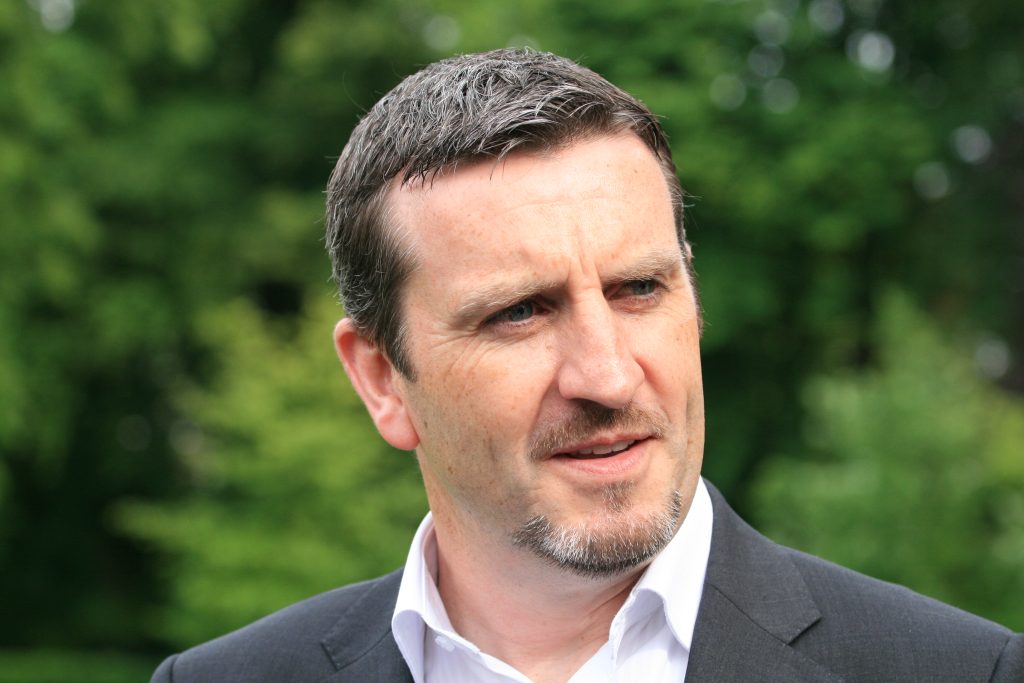What would you describe as your most memorable achievement?
It has to be learning to fly a helicopter and then flying one underneath the Golden Gate Bridge in San Francisco.

What first made you think of a career in technology?
Other than various part-time jobs, my first ‘real’ job was as an aerospace engineer for British Aerospace. I worked on various aircraft such as the Airbus A320, A340 and was part of the conceptual design team for the A380.
I’ve always been an engineer at heart. My move from physical engineering work to computer-based was when I started working in Computer-Aided Design (CAD). As part of that process, I realised that I really enjoyed helping others get to grips with technology. This led to my move into pure-play IT in the early 90s. As you can imagine, this was an exciting time – we were moving towards the dot-com era and I wanted to be a part of it.
What style of management philosophy do you employ with your current position?
I’m an engineer BUT I do not care how something works unless I can see the value it brings. What that translates to in my role, is that when I talk to companies about our technology, I’m not really there to tell them how it works. I am there to tell them why they should care, why this piece of technology could make their lives so much better tomorrow than it currently is today. If I can convince them of that, then we might be able to discuss how we [NetApp] can make that happen. I apply a similar strategy with people; I believe the better you can explain to someone why what they could be doing tomorrow is better than what they do today, people are much more willing to embrace change.
What do you think emerged as the technology trend of 2022 and why?
Artificial Intelligence and Machine Learning really exploded in popularity and investment during the course of 2022, culminating with the launch of ChatGPT in November which has subsequently propelled into the consciousness of the general public as well as those involved in the IT sector. This year, we can expect to see more and more companies finding ways to use ChatGPT to help develop code, write documentation, perform testing and much more. This type of generative AI is likely to have some of the most profound impact to the way companies use technology and the way people interact with it.
What do you currently identify as the major areas of investment in your industry?
We’re seeing businesses look more into multiple clouds. This is creating significant complexity along with a widespread lack of insight and understanding into what resources they are consuming across these multiple clouds. There is also confusion around how to optimise their multi-cloud environments and how to reduce the running costs. So, one of the main issues I – and NetApp – is really focused on, is helping customers achieve consistent services for data management, insights and optimisation across their entire hybrid-multi-cloud environment. This can significantly reduce the operational costs of and help companies meet their ESG targets.
How do you deal with stress and unwind outside of the office?
I’m a huge car fan. I really enjoy meeting with other local car owners and attend a few car clubs on weekends. I also enjoy clay pigeon shooting.
If you could go back and change one career decision, what would it be?
Where I am today is the product of all the things I’ve done along the way, so I don’t think there’s anything significant I would change. There have certainly been times during my career where I’ve not enjoyed some tasks but even these are often good learning opportunities.
What are the region-specific challenges when implementing new technologies in Europe?
Within Europe, there are a lot of different regulations – and interpretations of them – which are hindering the adoption of the technology.
Specifically, we’ve seen this within the level of adoption of the cloud. I remember a customer in one country I visited saying they couldn’t use the cloud because the data couldn’t leave their country, then the hyperscale providers built local data centres, now the company says it isn’t allowed to put its data in someone else’s data centre. In this particular country the former is true, the latter is not.
What changes to your job role have you seen in the last year and how do you see these developing in the next 12 months?
Over the last year I moved from a position that reported to sales leadership to one that reports directly to our CMO. This has already proved to be a good change as I can now directly influence the topics we need to focus on as a company. I get to identify trends and ensure we’re considering these in our products, our solutions and the way we speak to the market and the companies we serve. A good example of this would be ensuring that we put a very strong focus on sustainability, which is now an area I consider us to be ahead of our competitors in in the way it’s influenced our product development and the way we’re showing companies how they can use parts of our portfolio to enable some of their sustainability objectives. There are already one or two more of these big trends I will work on over the coming 12 months.
In the background I’ll keep doing what I’ve always done which is to assess what I want to do with my role over the next 12–24 months – things I believe I need to stop doing or enable others to do, new things I would like to do and ones I believe would have the biggest impact for NetApp. I’ll define this, convince others as to the value I believe it will offer and then work to convince them that this should be my new role, or the evolution of my current one.
What advice would you offer somebody aspiring to obtain C-level position in your industry?
If I think about how I’ve gotten to where I am then it came down to a choice; the first was to identify a position that already exists that I wanted and then build a path to get there. For this route it’s absolutely key to build a very strong network of people that can trust and believe in you and then make it very clear what your ambitions are. Or the alternative option in my case was to create a new position, one that didn’t already exist and then as I mentioned above, define it, work out the impact that it could have, be very clear about why I am the right candidate and then where possible start doing some of the things that this role should do. If you believe it has value, if you can demonstrate it has value then you stand a chance of it getting you to where you want to be.
Click below to share this article

